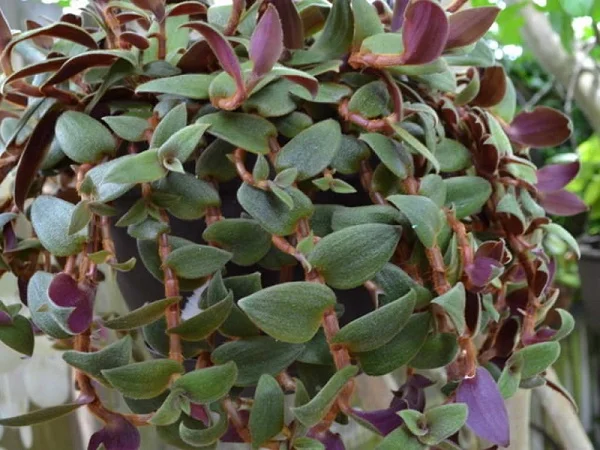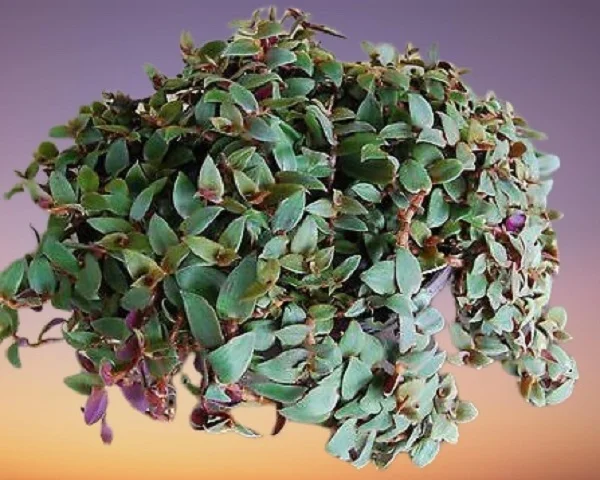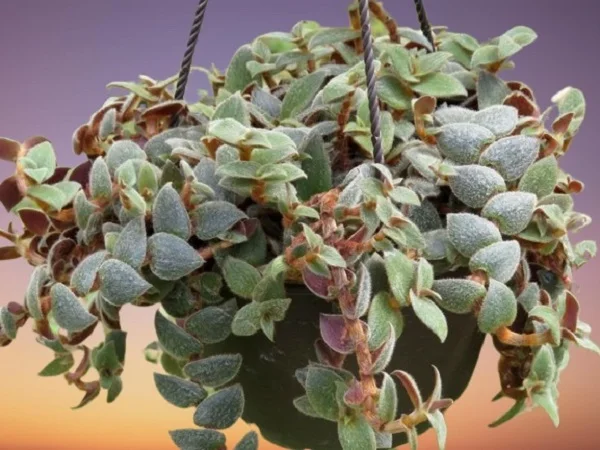10 Reasons Why Teddy Bear Vine is Dying and How to Revive It
Some links in this post may be affiliate links
Teddy Bear Vine is dying due to root-rot, pest infestations, inconsistent watering, nutrients deficiency, insufficient light, drafts, dry air, poor quality soil among others.
The Teddy Bear Plant is a popular succulent vine which bears oval-shaped, hairy (velvet-like) leaves with purple undersides and is one of the best hanging succulents for both indoor and outdoor growing.
Teddy Bear Vine which is known by the botanical names Cyanotis kewensis and Cyanotis beddomei is a relative of Cyanotis somaliensis (Pussy Ears Vine) which bears larger leaves with pale grey hairs.
Cyanotis kewensis is a low-maintenance plant and prospers in bright indirect light with 4-6 hours of morning or late afternoon sunshine, warmth of 15-270C, humidity of 50-55% and moderately moist, fertile succulents mix coupled with weekly feeding in the growing season. Learn how to grow and care for Teddy Bear Plant.
If you fail to provide the right growing conditions, your Teddy Bear Plant may begin to die. Herebelow are 10 reasons why your Teddy Bear Vine may die and how to fix them.

10 Reasons Why Teddy Bear Vine is Dying & Solutions
1. Root-rot disease
Teddy Bear Vine is prone to root-rot which is prevalent in soggy and overwatered soil especially in the cold season. The disease is characterized by yellowing, wilting and leaf drop which is rapidly followed by browning and plant death.
How to fix it
Carefully, remove your Teddy Bear Plant from of its pot and inspect the roots. Brown-black mushy roots indicate root-rot, trim them off.
Treat the healthy roots with a copper-based fungicidal solution as recommended by the manufacturer.
Disinfect the pot with the fungicidal solution or use a fresh pot to repot the plant in fresh succulents soil.
Withhold watering the plant and keep it dry for about 7 days before you resume watering.
To prevent root-rot in the future, ascertain that the pot has a drainage hole and the soil is well-draining to prevent it from getting soggy.
Take care not to overwater the plant in the cold season as growth is minimal at this time, therefore, the plant does not need a lot of water.
2. Poor quality Soil
Poor quality soil does not drain easily and therefore it easily becomes compacted or soggy which can result in reduced growth and death of the plant.
How to fix it
Grow your Teddy Bear Plant in succulents soil which is rich in organic matter to prevent it from getting soggy while providing the required nutrients.
3. Nutrients deficiency
Overfeeding will result in death of the roots due to fertilizer burn. This implies they cannot take up the nutrients and water required for photosynthesis, thus, the plant begins to die due to lack of food.
On the other hand, underfeeding the plant means that the plant is not getting enough nutrients needed for growth, therefore, it begins to die.
How to fix it
Feed your Teddy Bear Vine with a balanced, water-soluble fertilizer every 4 weeks in spring and summer for a lush growth. Withhold feeding in fall and winter as growth is minimal and feeding at this time can lead to fertilizer burn and death of the plant.
4. Pest infestations
Teddy Bear Vine is prone to sap-sucking insects like aphids and spider mites which are more common in poorly ventilated, dry conditions. These pests may cause the plant to become dehydrated, stunted and to begin to die.
How to fix it
Isolate the affected plant to prevent spread to the other plants.
Treat the affected plant with insecticidal soap or neem oil. Make sure to follow the manufacturers' instructions.
Make sure that your plant is healthy at all times by giving it the right growing conditions.
To elevate humidity, use a wet pebble tray or a humidifier. You may grow the plant in a well-lit bathroom and other humid areas in the home.
Keep the plant well pruned by removal of dead, yellow and diseased foliage to reduce the pests hidding places.
Maintain a proper air flow to discourage the pests.

5. Being pot-bound
If the plant becomes pot-bound, it begins to wilt, drop leaves and will eventually die. This is because the roots have filled the pot and there is very little soil to hold water when you water the plant. This will cause the plant to wilt, drop leaves and may die.
How to fix it
Check the bottom of the pot for roots growing through the drainage hole and repot your Teddy Bear Plant into a terracoatta pot one size larger than the current one.
Use a terracotta pot because it is porous and allows water to drain faster. This prevents the soil from holding too much water and being soggy.
Thereafter, repot the plant at the beginning of the growing season (spring to early summer) when it is root-bound.
6. Insufficient light
Adequate light is necessary for photosynthesis, the process by which plants make food needed for growth and energy. Too little light means that the plant cannot make enough food for growth and development which results in stunted growth and death of the plant.
How to fix it
Position your Teddy Bear Vine in bright indirect light with 4-6 hours of morning or late afteroon sunshine or instal grow lights if the natural lighting is not adequate.
Rotate the pot regularly to ensure that the plant receives light on all sides for uniform growth and prevent leggy growth.
7. Dry air
Too dry air leads to very low air humidity resulting in dry and shrivelled leaves, leaf drop and eventual death of the plant.
How to fix it
To increase humidity for your Teddy Bear Vine, group the plants together or grow the plant in a well-lit bathroom and other humid areas in the home. You may also set the pot on a wet pebble tray or use a cool mist humidifier.

8. Inconsistent watering
Both overwatering and underwatering will result in yellow leaves, leaf drop and eventual death of the plant Overwatering will cause the roots to die due to lack of oxygen. This means that they cannot take up water which causes the leaves to yellow, drop and eventually the plant dies.
Underwatering implies that there is too little moisture in the soil, therefore, the plant has no water to take up to the leaves. Thus, the leaves begin to drop and eventually the plant may die if the situation is not corrected.
How to fix it
Do not water your Teddy Bear Vine on a schedule. Water when the top 2-3 inches of soil dry out but do not allow the soil to dry out completely.
9. Hot sunshine
Exposing your Teddy Bear Vine to hot sunshine will result in wilting, leaf drop and eventual death of the plant.
How to fix it
Place your Teddy Bear Vine in a more shaded spot or instal a light curtain to filter the sunlight.
10. Drafts
Both cold and hot drafts are detrimental to the growth of the plant due to the sudden changes in temperatures. They lead to reduced growth, yellowing, leaf fall and eventual plant death.
How to fix it
Keep your Teddy Bear Vine away from sources of drafts like AC units, hot air vents, windy doors among others to maintain a warmth of 15-270C with a minimum of 130C.
You liked it? Share on social media.
Related Content
Amazon Associates Disclosure
Homeplantsguide.com is a participant in the Amazon Services LLC Associates Program, an affiliate advertising program designed to provide a means for sites to earn advertising fees by advertising and linking to amazon.com.



